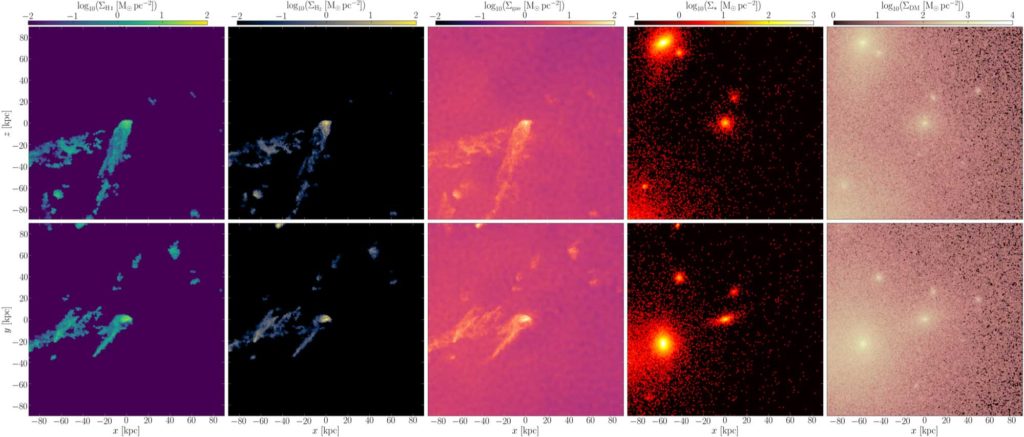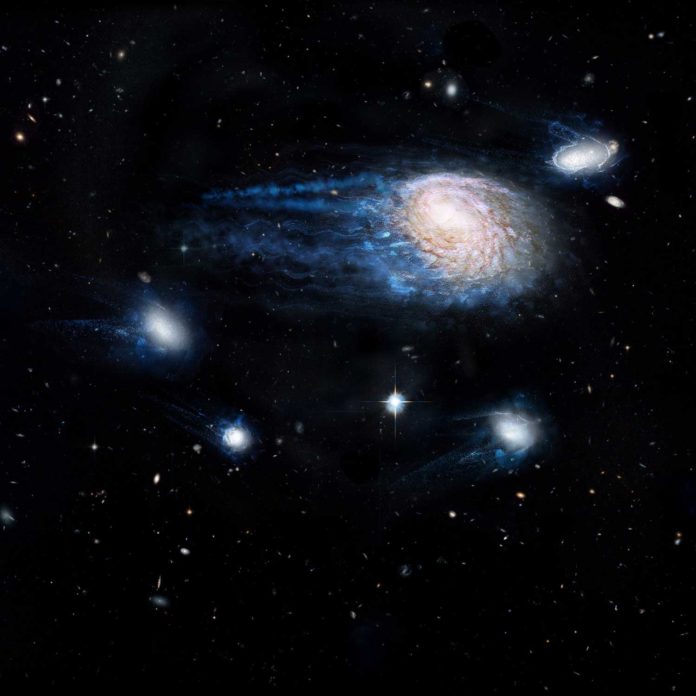Molecular gas inside the giant clouds in galaxies centers is believed to be the building block for star formation. In other words, gas is the lifeblood of a galaxy. Without it, galaxies stagnate.
For a long time, astronomers have known that large galaxies steal atomic’ gas from the outskirts of small galaxies, but it hadn’t been tested with molecular gas in the same detail.
A recent study, led by Dr. Adam Stevens is an astrophysicist based at UWA working for the International Centre for Radio Astronomy Research (ICRAR) and affiliated to the ARC Centre of Excellence in All Sky Astrophysics in 3 Dimensions (ASTRO 3D), offers new systematic evidence that small galaxies lose some of their molecular gas when they come in close contact with large galaxies and its surrounding hot gas halo.
Astronomers also found that these small satellite galaxies hold less ‘molecular’ gas at their cores.
ICRAR-UWA astronomer Associate Professor Barbara Catinella said, “galaxies don’t typically live in isolation. Most galaxies have friends.”
“And when a galaxy moves through the hot intergalactic medium or galaxy halo, some of the cold gas in the galaxy is stripped away. This fast-acting process is known as ram pressure stripping.”

For the study, astronomers used advanced cosmological simulation to predict the amount of atomic and molecular gas. The data was gathered from specific surveys on the Arecibo telescope in Puerto Rico and the IRAM 30-meter telescope in Spain for the simulation.
They then took actual observations from the telescopes. When compared to their original predictions, they found that both data have remarkable similarities.
Associate Professor Catinella, who led the Arecibo survey of atomic gas, says, “the IRAM 30-meter telescope observed the molecular gas in more than 500 galaxies.”
“These are the deepest observations and the largest sample of atomic and molecular gas in the local Universe. That’s why it was the best sample to do this analysis.”
Dr. Stevens said, “stripped gas initially goes into the space around the larger galaxy.”
“That may end up eventually raining down onto the bigger galaxy, or it might end up just staying out in its surroundings. But in most cases, the little galaxy is doomed to merge with the larger one anyway.”
Dr. Stevens said, “Often they only survive for one to two billion years, and then they’ll end up merging with the central one.”
“So it affects how much gas they’ve got by the time they merge, which then will affect the evolution of the large system as well. Once galaxies get big enough, they start to rely on getting more matter from the cannibalism of smaller galaxies.”
Journal Reference:
- Adam R. H. Stevens et al. Molecular hydrogen in IllustrisTNG galaxies: carefully comparing signatures of environment with local CO & SFR data. DOI: 10.1093/mnras/staa3662
